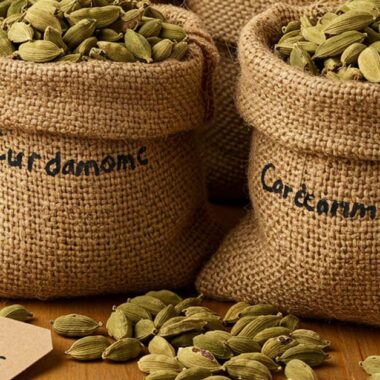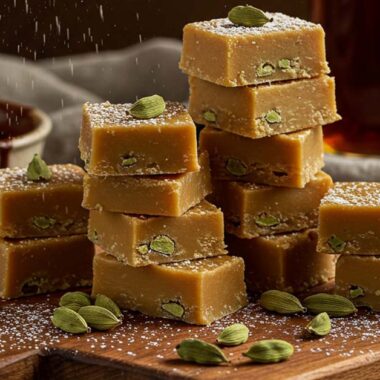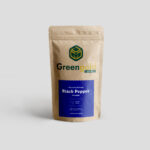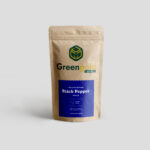Cardamom is one of the most expensive spices in the world, often ranking just behind saffron and vanilla. But what makes this small green pod so costly? 🤔💸
If you’ve ever wondered why cardamom has such a premium price tag, let’s break down the factors that drive its high cost. 📈🌱
1️⃣ Labor-Intensive Cultivation & Harvesting 🚜✋
Unlike mass-produced crops, cardamom requires intense manual labor from start to finish.
🌱 Why it’s costly to grow:
✔️ Slow growth cycle – It takes 2-3 years for a plant to start producing pods.
✔️ Hand-picking required – Each pod is carefully harvested by hand to avoid damage.
✔️ Multiple harvests – Farmers must visit plants every 2-3 weeks to pick mature pods.
✔️ Shade-grown farming – Requires special care to maintain healthy crops.
💡 Fact: A single farmer can only harvest a few kilograms per day, making the labor costs high!
2️⃣ Limited Growing Regions 🌍
Cardamom thrives in tropical, high-altitude climates with specific conditions. It is mainly grown in:
🌿 Idukki, India – Produces some of the world’s finest green cardamom
🌿 Guatemala – The largest exporter of cardamom globally
🌿 Nepal & Sri Lanka – Smaller producers with niche markets
💡 Why does this matter?
✔️ Small supply areas = Higher prices
✔️ Climate changes, droughts, or excessive rain can ruin entire harvests, reducing availability
3️⃣ Fluctuating Global Demand 📈
Cardamom is in high demand for:
✔️ Cooking & spices (Middle Eastern, Indian, Scandinavian cuisines) 🍛
✔️ Ayurvedic & traditional medicine 🏥
✔️ Tea & coffee blends ☕
✔️ Perfumes & essential oils 💐
🌍 Biggest importers:
🇸🇦 Saudi Arabia & UAE – Used in Arabic coffee & luxury foods
🇪🇺 Europe – Demand for gourmet cuisine & organic products
🇮🇳 India – One of the largest consumers
💡 Fact: The Middle East alone imports over 50% of the world’s cardamom! 🚢
4️⃣ Price Fluctuations & Market Speculation 📊
Cardamom prices aren’t stable—they fluctuate based on:
📉 Climate issues – Poor weather can cut supply, pushing prices up.
📦 Stockpiling by traders – When traders hold stock, they can manipulate prices.
💸 Export regulations – Countries like India sometimes limit exports to control local prices.
💡 Example: A few years ago, heavy rains in Idukki destroyed crops, causing a massive price surge in the global market!
5️⃣ High Processing & Storage Costs 🏭
Unlike spices like black pepper, cardamom needs special post-harvest handling:
✔️ Careful drying – To preserve the essential oils that give cardamom its aroma. 🌿
✔️ Grading & sorting – Hand-sorted for quality (bigger, greener pods are more valuable).
✔️ Special storage – Needs cool, airtight conditions to prevent flavor loss.
💡 Fact: Top-quality green cardamom can fetch $50+ per kg in international markets!
6️⃣ Organic vs. Conventional Farming 🌱
💰 Organic cardamom is even more expensive because:
✔️ No chemical pesticides or fertilizers are used. 🚫🧪
✔️ Yields are lower due to natural farming methods.
✔️ Certification & inspection costs add to the final price.
💡 Tip: Organic cardamom is healthier, more aromatic, and sustainably grown, making it worth the price!
7️⃣ Middlemen & Export Costs 🚢
By the time cardamom reaches international buyers, it passes through:
✅ Farmers → ✅ Traders → ✅ Wholesalers → ✅ Exporters → ✅ Retailers
Each step adds to the price, especially due to:
✔️ Export duties & taxes 💰
✔️ Shipping & transportation 🚚
✔️ Retail markups 🏪
💡 Tip: Buying directly from trusted sources (like Greengold Guide) eliminates extra costs!
🎯 Final Thoughts: Is Cardamom Worth the Price?
✅ YES! Because:
✔️ It’s labor-intensive & hand-harvested 🌱
✔️ Grown in limited regions with special conditions 🌍
✔️ Essential for global cuisines & health benefits 🏆
✔️ High-quality varieties have rich aroma & flavor 🤩
💡 Want to experience premium cardamom?
👉 Buy from Greengold Guide! 🛍️












